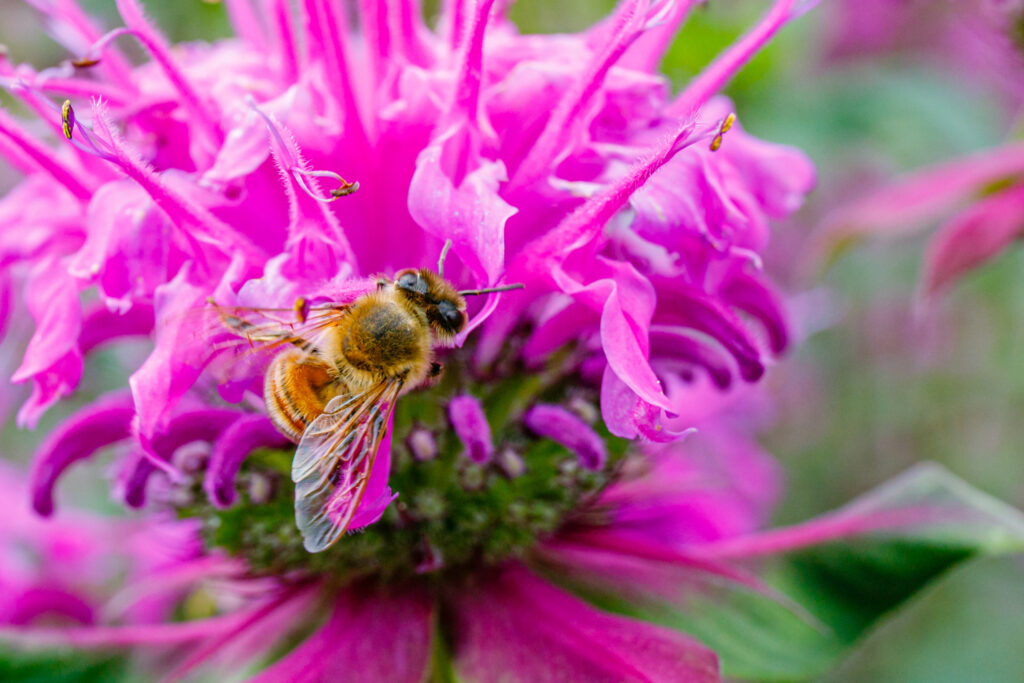A native North American plant and member of the mint family (Lamiaceae).
Culinary and Medicinal uses for Bee Balm

Bee Balm leaves are aromatic and are useful for both culinary and medicinal purposes. The beautiful, spiked flowers are also edible and make a great addition to salads, pizzas, or as garnishes. It is great with lamb because it has the flavor of mint with the earthiness of oregano. You may hear it referred to as “wild bergamot”. While Bee Balm or Wild Bergamot is excellent for making a medicinal tea, it should not be confused with Bergamot tea or Earl Grey Tea. Earl Grey tea is made from black tea and the bergamot orange which is a citrus fruit grown in the Mediterranean. (Not a member of the mint family)
Why should you make tea with Bee Balm? It’s loaded with antioxidants that protect cells from free-radical damage. It also has anti-inflammatory properties, boosts digestion, is a great remedy for indigestion, and calms anxiety. Some say it helps relieve insomnia making it a great tea to drink before bed.
Tea can be made the traditional way:
Steep chopped leaves (flower petals can be used along with leaves) in a cup of hot water until the water cools. Remove the leaves. Add lemon and or honey to taste.
Or as a refreshing summer treat:
Fill a container with 4 cups of filtered water, add 1 to 2 teaspoons of Bee Balm leaves.
Close the lid and place in the refrigerator for 8-12 hours.
Strain using cheesecloth or a coffee filter.
Enjoy for 3-5 days, if it’s stored in the refrigerator.
After straining simple syrup and/or lemon can be added for extra flavor.

